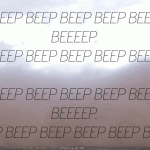 The Kepler telescope has found 685 systems with 1705 exoplanets, and you can watch them whirr around together in this mesmerizing animation by astrocubs . The data is from the NASA Exoplanet Archive . I made the visualization in Python: source code available here . The fact that the worlds and systems we’ve observed are so different from our own is a limitation of our observations, not of the universe. The orbits are shown to scale, but the planets are much larger than the orbits would suggest. Otherwise you wouldn’t be able to see them. The planets are not to scale with one another, either. Also, the orbits wouldn’t be perfectly circular, though I guess the animator might have made the simulation adhere to the laws of planetary motion an all the observed worlds have roughly-circular orbits. Of course the solar systems aren’t this close tog—look, sshhhh, just watch it, it’s pretty.
The Kepler telescope has found 685 systems with 1705 exoplanets, and you can watch them whirr around together in this mesmerizing animation by astrocubs . The data is from the NASA Exoplanet Archive . I made the visualization in Python: source code available here . The fact that the worlds and systems we’ve observed are so different from our own is a limitation of our observations, not of the universe. The orbits are shown to scale, but the planets are much larger than the orbits would suggest. Otherwise you wouldn’t be able to see them. The planets are not to scale with one another, either. Also, the orbits wouldn’t be perfectly circular, though I guess the animator might have made the simulation adhere to the laws of planetary motion an all the observed worlds have roughly-circular orbits. Of course the solar systems aren’t this close tog—look, sshhhh, just watch it, it’s pretty.
More:
Watch all the exoplanets orbit their stars simultaneously







